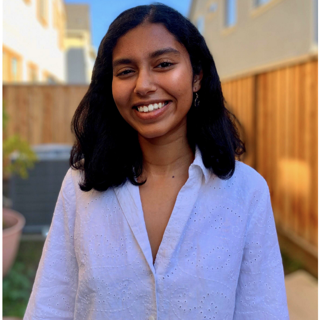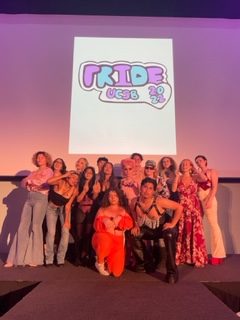Anusikha Halder Trans & Queer Commission at UCSB

Increasingly, the idea of intersectionality is finding its way into our everyday conversations. This is a topic we explored in this column when talking to the Westmont Feminist Society, who hold up a mission to promote diversity and education. This week we’re talking to Anusikha Halder, the head of the Trans & Queer Commission at UCSB, to learn more about intersectionality, pronouns, and how queer representation is changing.
Q. What is your role on the commission?
A. I’m chair of the Trans & Queer Commission. Basically, what that means is that I’m in charge of making sure everything is running smoothly and that people on the executive board have the resources they need to host events and get involved with Associated Students.
How did the commission get started?
Our commission started in 2007. We’re something called a board commission unit, which basically means we fall under Associated Students as UCSB, and we get a lock-in fee from student fees. That means our budget comes from students paying university fees. A portion goes to us, and we redistribute those fees for LBGTQ+ events, for queer groups, and for general resources and empowerment – that’s what our work is centered on.
Since the commission started in 2007, what would you say has changed?
I feel there has been a lot more diversity in events we’re centering and identities we’re seeking visibility for. You can see that even on the executive board; there’s a lot more trans, non-binary, and gender nonconforming individuals serving; there’s a lot more people of color serving; there are a lot more identities we’re aware of. This year, we’re acknowledging individuals who are asexual and aromantic. I feel like that representation hasn’t existed historically.
How would you describe your identity and how would you say that fits into your work with the commission?

I hold several intersectional identities as someone who identifies as a Bisexual Bengali woman – a queer woman of color. A lot of my work on the commission has been focused on promoting inclusivity for queer, trans, Black, and Indigenous people of color.
UCSB is a Hispanic serving institution, so we have had that representation on the commission before, which is a good step, but before I started being chair, our commission did have a tendency to be male dominated and not have any Black, Indigenous, or other ethnicities represented – which is important to recognizing the diversity in our community and needs. A lot of my work has been acknowledging the fact that just because we have representation and resources of LGBTQ+ people on the whole, we still have to give voices and resources to these further marginalized identities and make sure they get visibility too.
Can you tell me about your pronouns?
Yeah! So my pronouns are she/they. Basically that means that in conversation or when you’re bringing up my name you can either say “she has been doing this” or you can say “they have been doing this.” Those can be used interchangeably.
Oftentimes when someone has multiple sets of pronouns (for instance, she and they) they will put the pronouns they prefer first. I’m really comfortable with “she,” but I do like “they,” so that’s why I have them in the order they are.
Tentatively, I do identify as a cis-woman, but those are the pronouns I resonate with and feel comfortable with. They don’t have to be inherently gendered, it’s really about how you like to be referred to.
Some find it challenging to use the pronoun “they” if they haven’t been close to someone who uses they/them pronouns before. Do you have any advice?
My advice is, one, we’ve used “they” in conversation historically but also: language adapts and evolves to the needs of people. There’s something very considerate and empathetic in referring to someone the way they want to be referred to. And it might take some adjustment. It might take some practice. But most often people will understand that you’re putting in the work to use the proper language.
What is something people can do today to support the LGBTQ+ community?
There are several things you can do. There are a lot of great nonprofits like the Trevor Project, there are local community organizations that you can look into supporting, but honestly I think the number one thing you can do is educate yourself. If you don’t know how pronouns work, if you don’t know things about trans and gender non-conforming people, if you don’t know how difficult it is to get hormone therapy, these are all things you can educate yourself about and take the labor off LGBTQ+ people having to explain themselves.
Last question. A lot has changed in our lifetime in terms of social politics and LGBTQ+ advocacy. What would you like to see change in the greater world in the next five years?
Representation, absolutely. I think there is a general narrative, and you see it a lot in film, that queer and trans people and all intersections that align between LGBTQ+ people have to live this really hard life. That they have to really fight hard for acceptance. I know that fight will never be over, certainly not in five years. But I want there to be narratives that show that we’re allowed to have happiness, that life isn’t all about
what is difficult.





